Abstract
Use of synthetic materials in herniplasty has been a controversial issue. In order to determine the influence of Mersilene mesh on the strength of healing abdominal wounds and its effectiveness in repair of hernia, experimental and clinical studies were undertaken. Experimental study included 175 male rats divided into three groups subjected to either: 1) an incision made only through the skin and closed with 3-0 silk sutures; 2) a 2.5 cm midline incision through the musculature and peritoneum closed with 2-0 Mersilene suture; or 3) the same procedure as group 2 with the addition of a Mersilene mesh onlay graft. Bursting strength of abdominal wounds as determined in all groups at intervals. Wounds of the group treated with the mesh exhibited significantly greater (P less than 0.01) bursting strength. Clinical trial consisted of 100 consecutive adult patients in which an onlay graft of Mersilene mesh was used in the hernioplasty. Mesh was used as an adjunct in patients with: 1) large ventral hernias; 2) direct hernias resulting from severely attenuated transversialis fascia; 3) indirect hernias associated with a large internal ring and a weak posterior inguinal wall; or 4) combined direct and indirect hernias. All were followed for a minimum of one year to determine the incidence of complication and rate of recurrence. This study suggests that: 1) Mersilene mesh increases the strength of healing abdominal wounds in rats; and 2) repair of large hernias with Mersilene mesh results in an acceptable morbidity and a lowered rate of recurrence.
Full text
PDF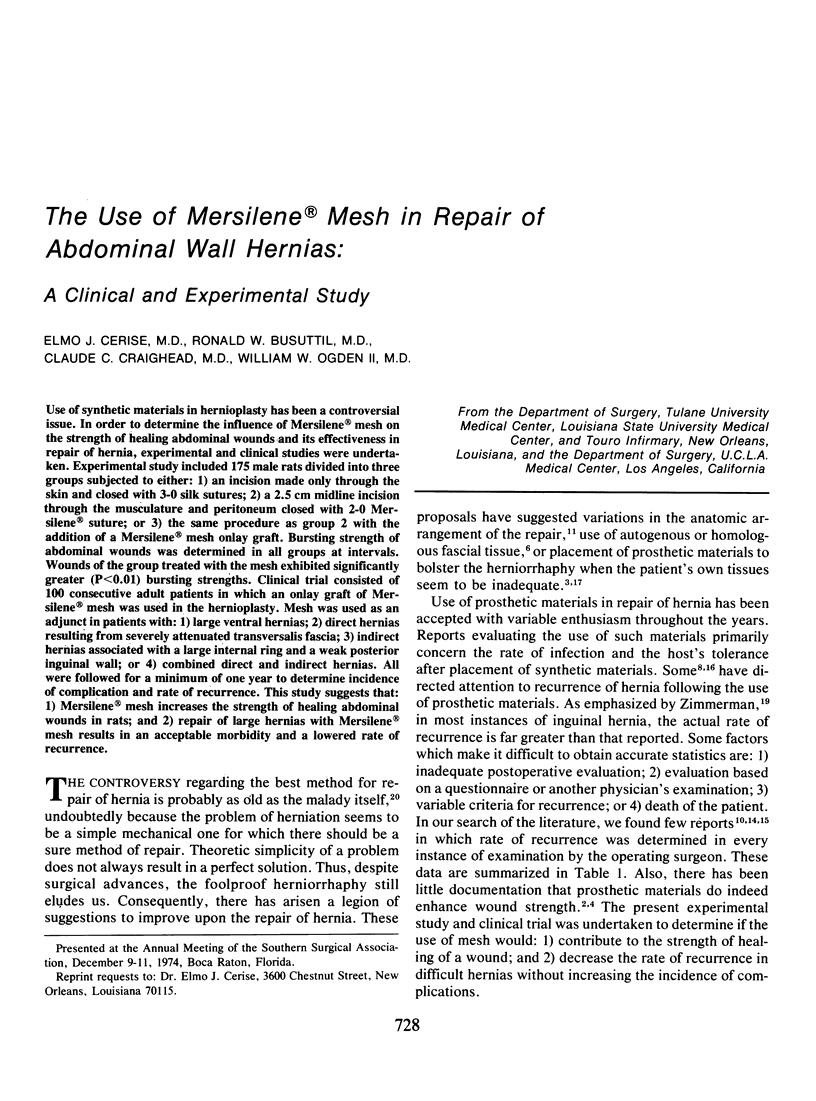
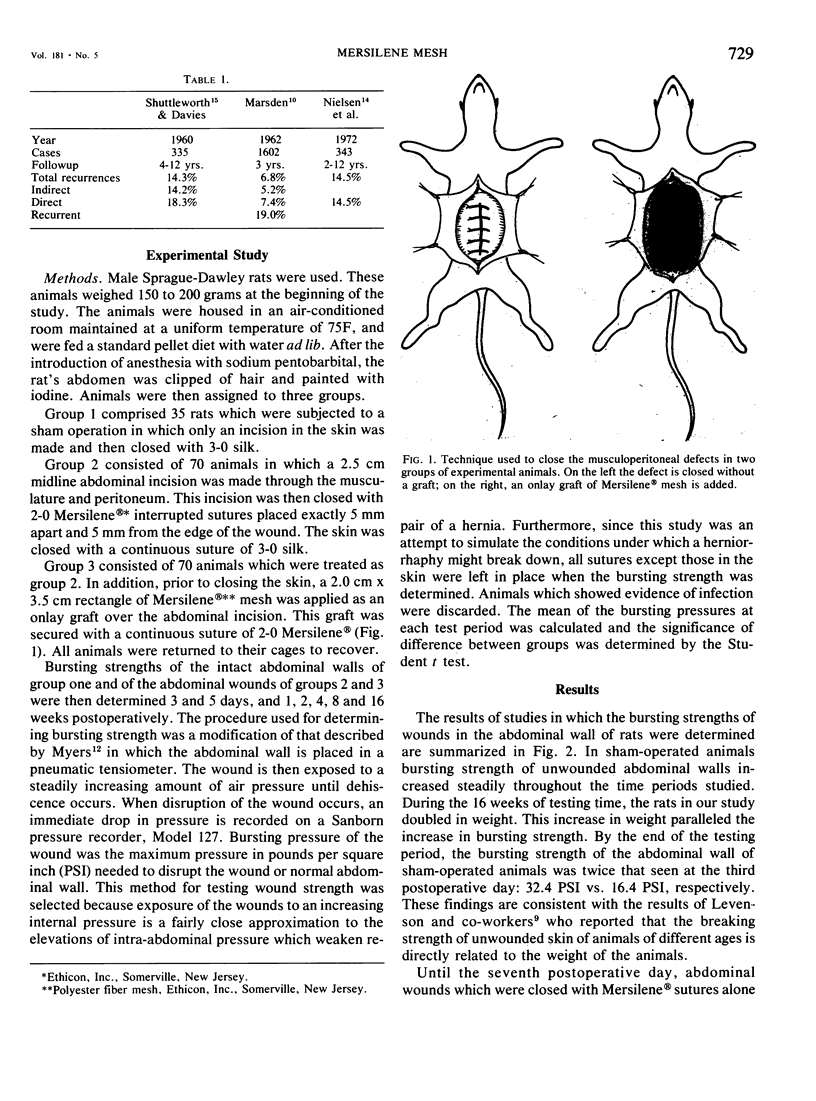
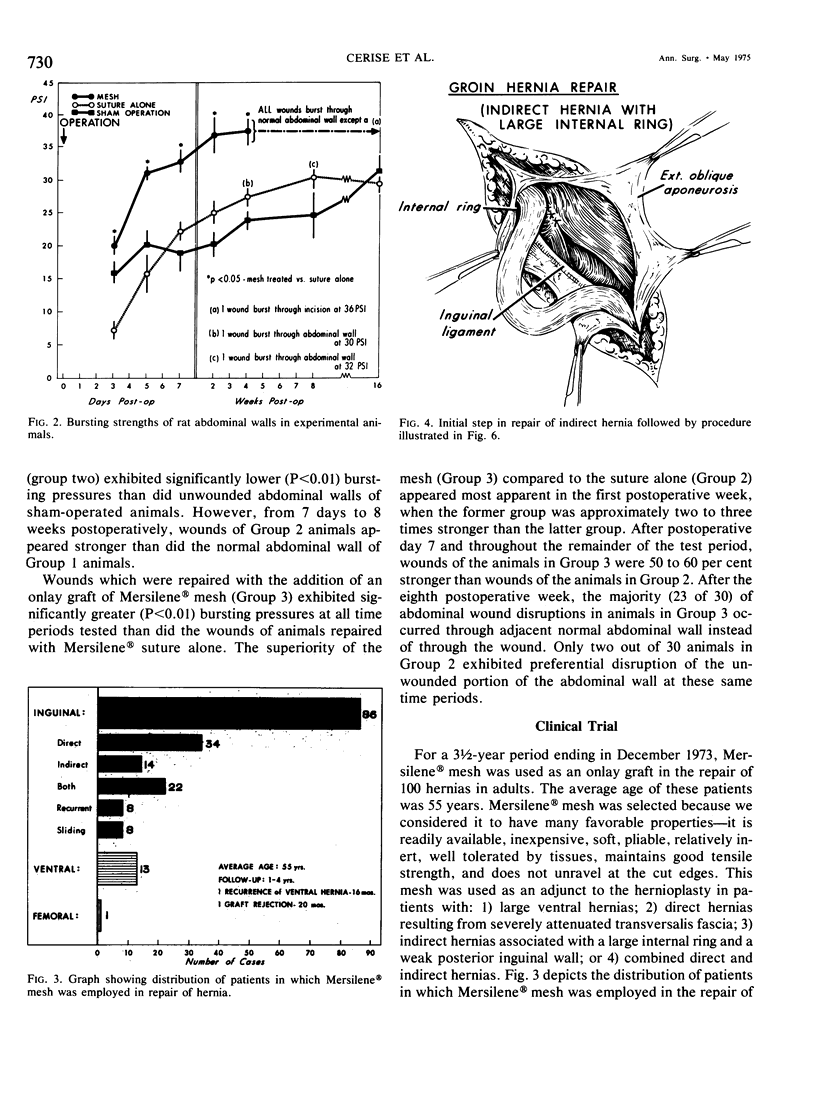
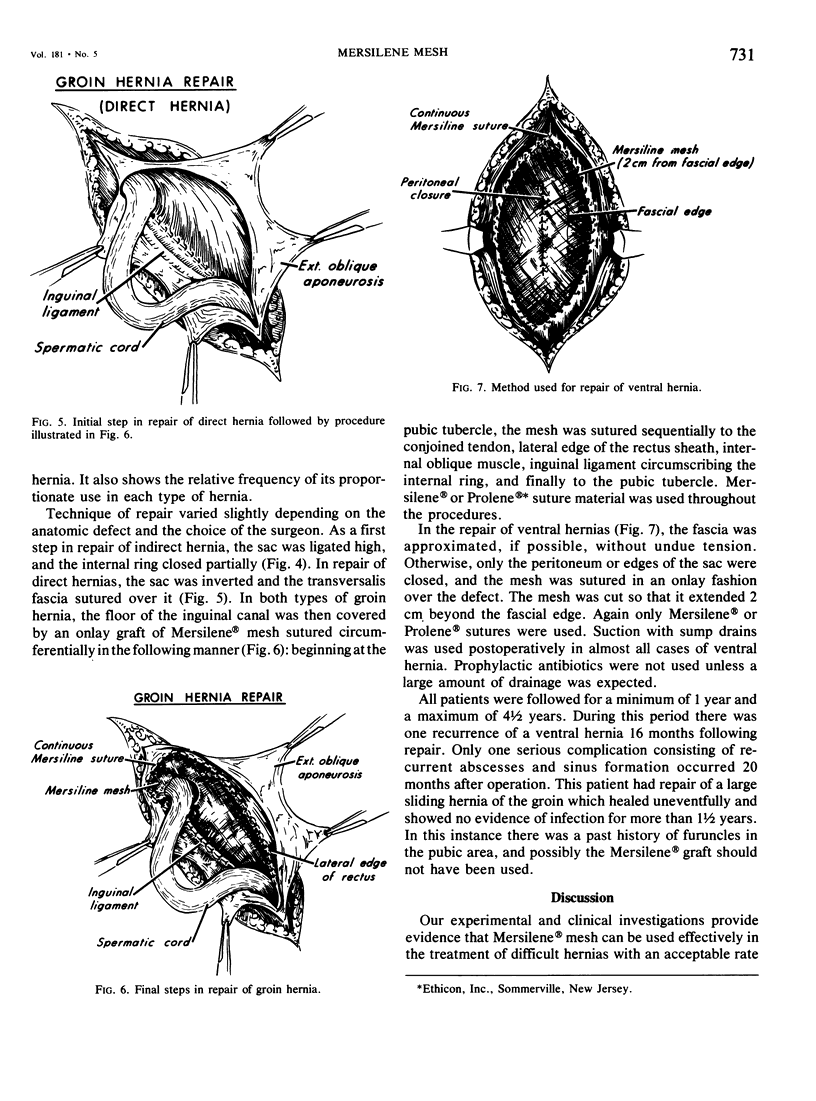
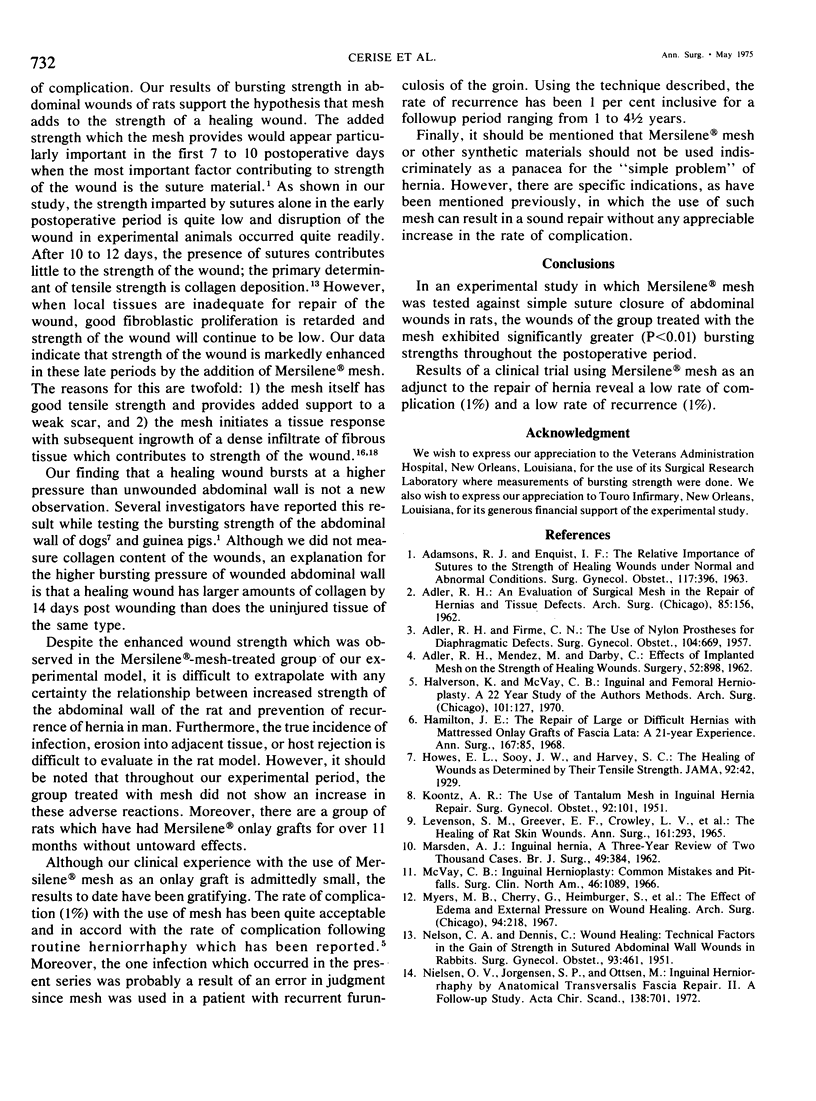
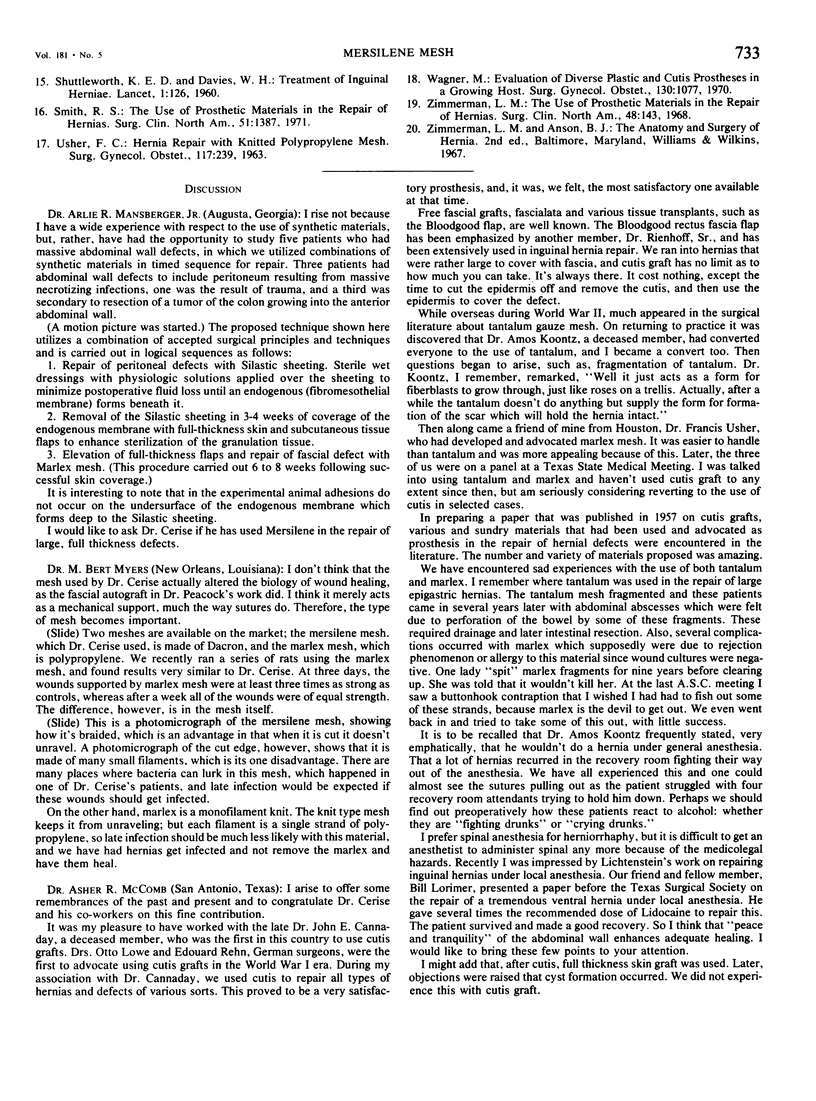
Images in this article
Selected References
These references are in PubMed. This may not be the complete list of references from this article.
- ADAMSONS R. J., ENQUIST I. F. THE RELATIVE IMPORTANCE OF SUTURES TO THE STRENGTH OF HEALING WOUNDS UNDER NORMAL AND ABNORMAL CONDITIONS. Surg Gynecol Obstet. 1963 Oct;117:396–401. [PubMed] [Google Scholar]
- ADLER R. H., FIRME C. N. The use of nylon prostheses for diaphragmatic defects. Surg Gynecol Obstet. 1957 Jun;104(6):669–674. [PubMed] [Google Scholar]
- ADLER R. H., MENDEZ M., DARBY C. Effects of implanted mesh on the strength of healing wounds. Surgery. 1962 Dec;52:898–904. [PubMed] [Google Scholar]
- Halverson K., McVay C. B. Inguinal and femoral hernioplasty. Arch Surg. 1970 Aug;101(2):127–135. doi: 10.1001/archsurg.1970.01340260031005. [DOI] [PubMed] [Google Scholar]
- Hamilton J. E. The repair of large or difficult hernias with mattressed onlay grafts of fascia lata: a 21-year experience. Ann Surg. 1968 Jan;167(1):85–90. doi: 10.1097/00000658-196801000-00013. [DOI] [PMC free article] [PubMed] [Google Scholar]
- KOONTZ A. R. The use of tantalum mesh in inguinal hernia repair. Surg Gynecol Obstet. 1951 Jan;92(1):101–104. [PubMed] [Google Scholar]
- LEVENSON S. M., GEEVER E. F., CROWLEY L. V., OATES J. F., 3rd, BERARD C. W., ROSEN H. THE HEALING OF RAT SKIN WOUNDS. Ann Surg. 1965 Feb;161:293–308. doi: 10.1097/00000658-196502000-00019. [DOI] [PMC free article] [PubMed] [Google Scholar]
- MARSDEN A. J. Inguinal hernia. A three-year review of two thousand cases. Br J Surg. 1962 Jan;49:384–394. doi: 10.1002/bjs.18004921607. [DOI] [PubMed] [Google Scholar]
- McVay C. B. Inguinal hernioplasty. Common mistakes and pitfalls. Surg Clin North Am. 1966 Oct;46(5):1089–1100. doi: 10.1016/s0039-6109(16)38026-4. [DOI] [PubMed] [Google Scholar]
- Myers M. B., Cherry G., Heimburger S., Hay M., Haydel H., Cooley L. The effect of edema and external pressure on wound healing. Arch Surg. 1967 Feb;94(2):218–222. doi: 10.1001/archsurg.1967.01330080056016. [DOI] [PubMed] [Google Scholar]
- NELSON C. A., DENNIS C. Wound healing; technical factors in the gain of strength in sutured abdominal wall wounds in rabbits. Surg Gynecol Obstet. 1951 Oct;93(4):461–467. [PubMed] [Google Scholar]
- Nielsen O. V., Jorgensen S. P., Ottsen M. Inguinal herniorrhaphy by anatomical transversalis fascia repair. II. A follow-up study. Acta Chir Scand. 1972;138(7):701–704. [PubMed] [Google Scholar]
- SHUTTLEWORTH K. E., DAVIES W. H. Treatment of inguinal herniae. Lancet. 1960 Jan 16;1(7116):126–127. doi: 10.1016/s0140-6736(60)90051-9. [DOI] [PubMed] [Google Scholar]
- USHER F. C. HERNIA REPAIR WITH KNITTED POLYPROPYLENE MESH. Surg Gynecol Obstet. 1963 Aug;117:239–240. [PubMed] [Google Scholar]
- Wagner M. Evaluation of diverse plastic and cutis prostheses in a growing host. Surg Gynecol Obstet. 1970 Jun;130(6):1077–1081. [PubMed] [Google Scholar]



